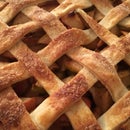Introduction: Portable Photobooth (iPad+DSLR)
After building a photobooth for our wedding, I realized I learned quite a bit that I could do differently after learning the constraints of the project. This is a redesign, incorporating the aspects that worked the best - the hardware and the messaging on the front.
After deciding to build a photobooth, I had a few constraints. I knew it should be lightweight, easily portable, and I preferred using as much equipment that I could repurpose for other photography projects. For simplicity, I decided not to include a print out of the photos, though there are additions to this setup that would allow that. This redesign has a few benefits over the original, including a straightforward construction using only plywood instead of building on an external structure (which is also a good bit cheaper not to mention faster), and best of all, the whole thing flat-packs! I'm still working on one final improvement as soon as I get my hands on a broken iPad - more on that later :-)
My next improvement for this project would be a visible countdown before the photos are taken to prepare people. We got a lot of great shots because people were surprised, but it would feel more refined with this feature.
As with most of my projects, I made it Techshop! Thanks to the Instructables community for the great questions that gave me the motivation to revisit this project and make it better.
Step 1: The Setup
The key to this project is the small, yellow SD card in the middle: an EYE-FI card. Any camera that takes an SD card will work - I used the Canon XSi - and a mobile device that can speak to the Eye-Fi Card such as an iPhone or iPad. I used an iPad2 because I wanted the images to be large enough to be viewed from farther away. The last piece is this intervalometer which can be set to take a set number of photos after an initial delay with a pause in between each photo. I chose 4 photos after a 3 second delay with 3 seconds in between each pose. The connection for most of this is obvious once you've gathered the supplies. Put the SD card in the camera, connect the intervalometer to the camera and program it as you'd like. The Eye-Fi card establishes its own wifi 'network' which becomes visible after taking a photo. After this, follow the directions for setting up your card. I find it helps to set the iPad in Airplane mode once you're connected to the Eye-Fi card network to help the photos transfer quickly. [Additional connection steps added]
The Eye Fi card has its own app for the iPad and other mobile devices and that's what's displaying the photos on the iPad. You can adjust the display modes in the application. You'll need that to 'wake up' the network. So here are the steps:
1. Open the Eye Fi app on your iPad.
2. Take a photo with the camera to wake up the network.
3. On the iPad, connect to the Eye Fi network under Wi-Fi networks.
3b. Optional step - I recommend turning on Airplane Mode here for faster photo transfers. (Again - if anyone know more about this than me, please teach me best practices.)
4. Switch back to the Eye Fi app. You should notice an icon on the top right of the gallery view with the camera connecting to a mobile device with a hand in front. That will be red when it's not connected and green when it is. If you've set everything up correctly, the images should come straight through. Click on any image to enlarge and stay in this view for the images to come in full screen.
The connection between the Eye-Fi card and iPad can be fickle. Be prepared to debug your setup, even after you've made the initial connection. App updates, card installations, and card settings can all change.
Step 2: The Structure: Supplies
This is where the redesigned photobooth is much, much better!
You will need:
1/2" birch ply, 4' x 2'
1/2" birch ply, 1' x 1'
1/8" birch ply, 2' x 2'
small scrap of arcylic and some glue
handful of small (~1/2") screws
cardboard for prototypes
Soon, I'll be replacing the iPad holder with a custom part which will require another piece of thin plastic.
Step 3: The Structure: Prototypes
Before using the plywood, I find it's best to sketch out the concept in cardboard. In my case, I knew the constraints of the hardware but I wanted the rest of the structure to be a simple and clean as possible.
In this case, this quick mock-up helped me see where there were necessary dado cuts, how the structure would support the electronics inside, and think through the various pieces I would need to access. I also did a mockup of the revised front board in the laser cutter.
Step 4: The Structure: Laser Cutting the Front Board
Cut the 2' x 2' board into two equal pieces.
Set up your laser cutting file to separate the raster etching parts from the vector cut lines.
Here are the settings I used for the 1/8" ply:
Raster: 95 (Speed), 90 (Power)
Vector: 30 (Speed), 80 (Power), 500 (Frequency)
At the end, I ran the vector cut lines a few extra times to cut through.
Step 5: The Structure: Woodshop
Starting with the 1/2" ply, identify the front and back of the plywood and label them (preferably the insides using light pencil).
Cut the boards to size
1. Cut the 4' x 2' board down to four equally sized boards, each approximately 1' x 2'. They'll each be a little under, depending on the kerf of the blade.
Test your dado
2. Switch out the table saw blade to a dado blade (if available) and be sure to do test cuts to see that the dado slot accommodates the exact thickness of your board. It should be a snug fit, but not forced.
Label your boards
3. Select three of the four boards to use as side boards. Identify the left, back, and right sides - these are more or less arbitrary as they should be identical at this point.
Dado cuts
4. For all three, there are three identical dado cuts. Do each of these single cuts to all three boards, one at a time, without adjusting the fence until each of the three boards has been cut - this will ensure consistency between the boards. When cutting the top and bottom of the board, be sure to move the fence so the board is perfectly aligned with the thickness of the dado blade to ensure a clean edge.
- The first cut will be along the top edge of all three boards
- The second cut will be along the bottom of all three
>> This next cut is only for the back board: cut along side the long edges of the back so that all four edges have a ~1/2" dado on the inside face.
- The third of the identical cuts will be for the camera shelf. This should measure to the bottom of the camera opening on the front board. Again, be sure to cut all three boards without adjusting the fence so the shelf has a nice, clean dado cut to slide into. You can change out the dado blade to a regular table saw blade after this.
Top and bottom boards
5. Using the fourth 1/2" ply board, cut the board in half with one slightly longer than the other. The bottom board should be 11.75" x 11.5", the top 11.5" x 11.5" to account for the front board.
Cut slots for the front board
6. The dado I had access to did not have a narrow enough option for the front board and the regular table saw kerf was too narrow so I made each cut at half the depth of the 1/2" board, one on the right side, one on the left (mirrored) and then nudged the fence back enough to see the blade half-overlap the first slot at the same depth.
Using some clamps, you should be able to put the structure together to see how your measurements are working.
Cut the shelf
7. With the structure assembled, cut the shelf to its final dimensions. Cut the shelf short to allow for the iPad and intervalometer to slip through.
Step 6: Vacuum Form the IPad
As a design improvement for this photobooth, I wanted to be able to hold the iPad closely and securely to the laser cut frame. I had an idea that vacuum forming an iPad would do this nicely but I was skittish about putting a normal, working iPad under hot plastic with suction. I envisioned the screen popping off or the heat causing other issues. I reached out to my network and got my hands on a broken iPad to create the formed plastic to hold the iPad in place. This worked beautifully! Since I used an iPad1, I also formed a piece of foam using a heat gun to warm the foam and pressed it between my two plastic forms to hold my working iPad2 in place. This also means the photobooth now works for iPad models 1 and 2.
The vacuum forming done here is the traditional process - heat the plastic, place the plastic over the iPad, raise the bed with the iPad, and pull suction to create a vacuum over the iPad and form the plastic in place.
Step 7: Installing the IPad Holder and Trigger Button Acrylic
Since I can't be sure exactly which model of iPad and intervalometer the ultimate end user will have for this photobooth, I created this with some flexibility in mind. I already mentioned that the iPad holder was made to accommodate older and newer models of full-sized iPads, but one other way to allow this flexibility was to create the sled for the intervalometer but not install it.
In the photos here, you can see the thin wooden slats placed above and below the iPad hole. These are standard birch plywood with a dado cut at the end to give the plastic iPad holder room to slide in and out freely while still holding it firmly in place. These are glued in place using standard wood glue and clamped until dry.
The sled for the intervalometer was fashioned with simple MDF and wood glue, cut to the length and width of the model of intervalometer I recommend using.
The hole for the intervalometer is preset. I used 1/8" acrylic, laser cut, and doubled up on the edge to give more purchase for the epoxy. The hole is large enough to accommodate most fingers to start the photobooth going.
Step 8: Assembly
Laser cut a small circle of acrylic with a smaller circle inside to make the button on the intervalometer accessible. Glue this piece to the back of the front board.
Lastly, I wanted to be able to flat-pack the final product to make it easier to ship and store. Assembled, this would be quite expensive to ship either for yourself or to sell. Also, for people like me with limited storage, it's nice to be able to take it apart and easily put it back together in between events. A few simple screws along the back and sides work quite nicely. If storage and shipping aren't a problem, you can glue up the edges with dado cuts and clamp it to dry. I'd recommend leaving the top as a friction fit, but the rest can be fixed.
The assembly order is important here and not terribly complicated:
1. Set the base down on a flat, clear surface.
2. Roughly hold up the back, left, and right sides together and friction fit the middle shelf for stability.
3. Screw the wood together, beginning at the bottom and working up the sides.
4. With the iPad and intervalometer loaded in position (and turned on, programmed accordingly), slide the front panel down using the grooves provided.
5. Place your dSLR on the shelf and connect to the intervalometer.
6. Add the top lid to close up your photobooth.
Step 9: Take It Out in the Wild!
The entire setup is contained within the box and lasts as long as the batteries in the iPad, DSLR, and intervalometer. No cords or looking for plugs, and the photos transfer without the need of wifi, so you can take this to a park, backyard, or any place else! We've used it at family BBQs, house parties, bachelorette parties, and our wedding. You could reset the intervalometer to take more than 4 photos (they're actually made for time lapse photos) so you could use this to photograph a sunset, look at marching band drill (you can see how I spent my high school years)...what else could you use it for?
Step 10: Enjoy!
Props or not, the photobooth is a fun way to take group photos and document events!

Finalist in the
Remote Control Contest

Participated in the
Outdoor Workshop Contest

Participated in the
Summer #mikehacks Contest





![Raised Bed Garden [for Those With Only Hand Tools!]](https://content.instructables.com/F2Q/UUXE/JUQSKGLC/F2QUUXEJUQSKGLC.jpg?auto=webp&crop=1%3A1&frame=1&width=130)







